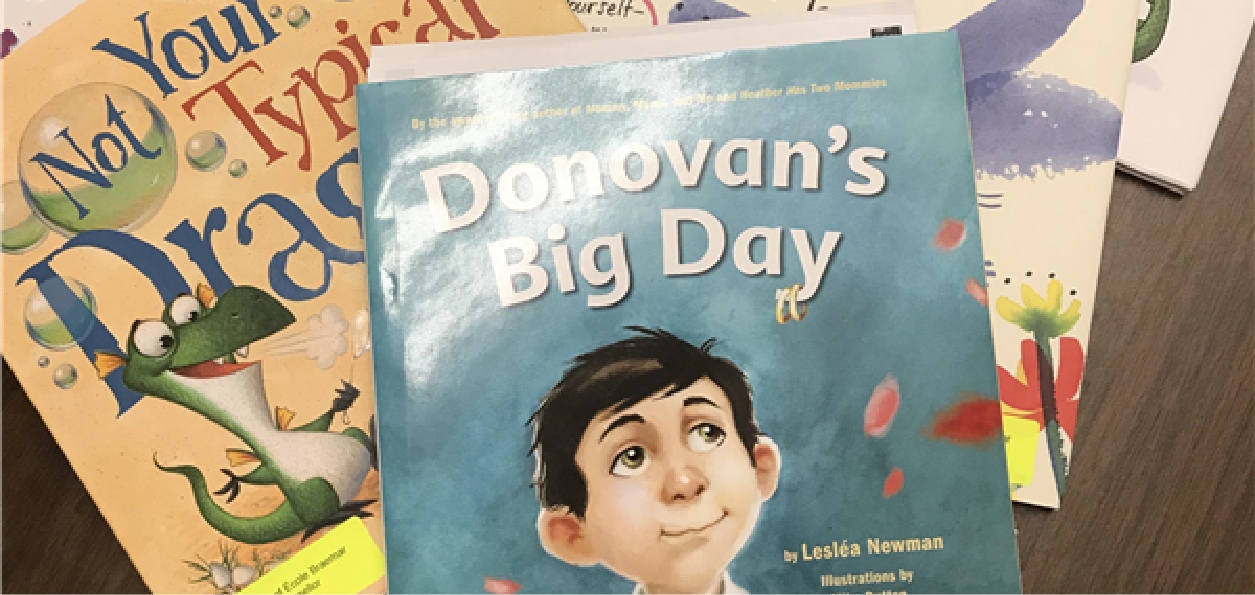Our inquiry question was:
“How is it feasible to promote mental well-being through all environments that promote student learning, health, and success? How does mental well-being impact the ‘whole child’?”
We began this inquiry by working together with our school counsellor to select resources that teachers could use school-wide to promote positive mental well-being. We decided to focus on the “Kids in the Know” resource for our grade 4-7 students which focuses on personal safety. This resource was available in French and English which was an advantage for our dual track school.
We began this inquiry by working together with our school counsellor to select resources that teachers could use school-wide to promote positive mental well-being. We decided to focus on the “Kids in the Know” resource for our grade 4-7 students which focuses on personal safety. We also decided to purchase a number of picture books that could be used in grades k-7 to teach about sexual orientation and gender identity (SOGI). Once all the resources were ordered, we introduced them to staff over several staff meetings. We showed staff how they align with the PE & Health and Career Education curriculums. Currently, the resources are being used in 6 classes and our school counsellor has been using the SOGI picture books to show classroom teachers how to introduce the concept of SOGI into classes in an age-appropriate way. She is bringing grade groups together and is hoping to visit all grades in the school by the end of the year.
Grade 4/5 students were asked to rate (on a scale from 1-5) about how confident they were in dealing with difficult situations after completing the Kids in the Know program. 81% of students rated their confidence as a 4 or a 5 out of 5, with the remaining students rating themselves as 3 out of 5. Some of the comments from students after completing the program included:
- I learned how to be safe online and about stranger danger.
- I learned lots of strategies on how to stay safe.
- It helped me to be safe and smart and always be prepared.
- I learned how to deal with scary situations.
Teachers found the program easy to use and the lessons engaging and well-aligned with student needs.
Through the Kids in the Know program, students learn strategies to keep them safe in a variety of difficult situations. As part of the program, it encourages kids to identify a number of adults that they feel safe going to for help. Students were also encouraged to have conversations at home about personal safety. For example, in a grade 4/5 class, students were asked to go home and create a list of contact numbers that they could use if there was an emergency when they were home alone.
The SOGI picture books that were purchased were shared in the library by our school counsellor at a staff meeting and then with grade groups throughout the school. Teachers and students across grade levels received the same message.
Next year, we would like to work on supporting more teachers with using the Kids in the Know Program with their students. We could also look at building similar consistency in approaching personal safety with our primary classes. We would also like to continue exposing classes to SOGI books with the support of the school counsellor and help teachers in feeling more comfortable using them on their own.
Working together with the school counsellor worked well as she brought expertise in terms of selecting resources and in introducing them with the staff. It was also helpful to show how the Kids in the Know program connected with the new curriculum (shared at a staff meeting) because teachers were looking for new resources to support these new courses.

